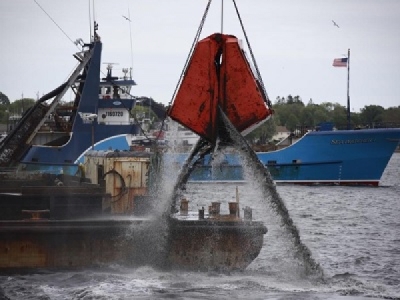
Posted on November 1, 2018
The final round of Superfund dredging below the tide line in New Bedford Harbor is scheduled to be completed next year.
Beginning in early 2019, dredging crews will make their final pass in the area from Riverside Park north to the Riverbank Lofts. Work will start between January and March, pending a final decision about whether to work through the winter.
In either case, dredging in water below the low-tide line should be “substantially complete” toward the end of the year, after which equipment used in that area will be removed from the harbor, according to ZaNetta Purnell, a spokeswoman for the New England office of the U.S. Environmental Protection Agency.
Additional work in some intertidal areas remains to be done.
The EPA is extracting a massive amount of sediment contaminated with cancer-causing polychlorinated biphenyls, or PCBs, released into the Acushnet River from adjacent properties where it was used in manufacturing for decades.
In the northern end of the harbor, above the so-called “cable crossing” area, dredging should be done by the end of this year.
Near the former Aerovox mill, construction of an interim cap on about three acres of highly contaminated shoreline and river bottom is expected to be done in early 2019. The cap will stay in place until on-shore cleanup under separate state and federal programs can remove the pollution on the property that continues to contaminate the river.
On shore, the EPA finished remediation and restoration of Fairhaven’s North Street Salt Marsh and “between the bridges” areas this summer. Replanting of salt marsh and upland meadow was also done at Riverside Park in New Bedford.
Similar shoreline work, including excavation, backfilling and planting could begin in the northern part of the upper harbor as early as the winter of 2019, according to the EPA.
Full-scale dredging to remove PCBs from the harbor began in 2004. Work by the EPA, along with other dredging by the state and city, has removed more than 1.27 million cubic yards of material since that time.
Source: SouthCoastTODAY





